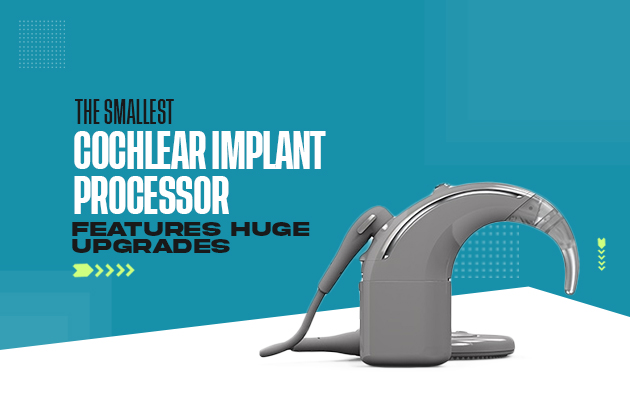The Smallest Cochlear Implant Processor Has Huge Upgrades
World’s first cochlear implant sound processor integrating Bluetooth Low Energy Audio is called NUCLEUS 8. The Cochlear Nuclear 8 sound processor has been given FDA approval by Cochlear Limited, the world leader in implanted hearing solutions. It is the first cochlear implant sound processor to use Bluetooth LE Audio technology to deliver direct audio communication to common consumer gadgets. Additionally, it is the tiniest, smartest, most connected, and lightest behind-the-ear cochlear processor ever created.
An improved function of the Nucleus 8 sound processor successfully minimises background noise that is distracting in order to improve the clarity of face-to-face communication.
What It Does
A cochlear implant is considerably different from a hearing aid since the former amplifies sounds so that people with damaged ears may still hear them. Bypassing the damaged area of the ear, cochlear implants activate the auditory nerve.
A cochlear implant is a tiny electrical gadget that aids in giving a person a sensation of sound. An exterior piece of the implant that fits behind the ear and a second portion that is surgically implanted beneath the skin make up the device.
The four components listed below make up an implant;
- MICROPHONE– It helps to pick up the sound from the environment.
- SPEECH PROCESSOR– It selects and arranges the sound being picked up by the microphone.
- TRANSMITTER and RECEIVER/STIMULATOR– It receives signals from the speech processor and convert them into electric impulses.
- ELECTRODE ARRAY– It is a group of electrodes that collects the impulses from the stimulator and sends them to different regions of the auditory nerve.
The auditory nerve transmits impulses produced by the implant to the brain, which interprets them as sound. Many people can interpret other sounds in their environment, identify warning signs, and comprehend spoken or telephone communication thanks to their cochlear implants. Users of the Nucleus 8 sound processor may listen to music, take phone calls, and understand their surroundings through the use of BLUETOOTH LOW ENERGY (BLE) audio communication.
Smaller, lighter, and more intelligent sound processors are being developed by Cochlear to enhance hearing performance. For people with severe to profound sensorineural hearing loss, Cochlear is an effective medical therapy.
SMALLER– Nucleus 8 sound processor instantly adapts to your environment and is 15% smaller and 13% lighter than the Nucleus 7 sound processor.
SMARTER– the feature of smartest hearing technology, Smart Sound IQ 2 with scan2 technology adjusts the nucleus 8 sound processor with the environment. Designed to hear the conversation more clearly and easily.
BETTER CONNECTED– It links the user to broadcasts in public spaces like airports, schools, sports facilities, and gyms that enable Bluetooth Auracast thanks to Bluetooth technology.
The president of Cochlear Americas Lisa Albert said “Cochlear’s goal is to help people feel empowered to connect with their world and make it easier to hear and be heard”. Anywhere like school, work place, restaurant or spending time with friends and family- life’s full of opportunities to engage with others.
The Nucleus 8 sound processor is now offered in six color variants to best suit your personality. By the end of 2022, it will be commercially accessible in the United States and Canada after receiving Health Canada approval.

